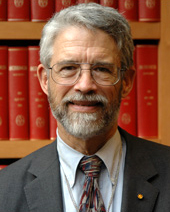 The White House on Friday released its long-delayed scientific integrity guidelines, intended to ban political interference in science. President Barack Obama campaigned on scientific integrity after scientists and others complained that Bush administration officials distorted scientific work and limited access to information on a variety of issues ranging from climate change to lead poisoning and mountaintop removal mining.
The White House on Friday released its long-delayed scientific integrity guidelines, intended to ban political interference in science. President Barack Obama campaigned on scientific integrity after scientists and others complained that Bush administration officials distorted scientific work and limited access to information on a variety of issues ranging from climate change to lead poisoning and mountaintop removal mining.
Shortly after Obama took office, he issued a memorandum in March 2009 calling for scientific integrity guidelines. He gave John Holdren, the director of the White House Office of Science and Technology, until that July, but the deadline kept slipping until Friday.
Holdren's four-page memo set out principles that would ensure openness in how scientific facts are used to guide government policies. The first in his list of requirements was that government agencies don't suppress or alter scientific findings.
Another requirement called for the free flow of scientific information. The guidelines also singled out a need to select candidates for scientific positions in the government "based primarily on their scientific and technological knowledge, credentials, experience and integrity."
It's now up to the government agencies to develop policies that put the principles into practice.
For example, the directive said that government scientists could speak to reporters and the public about their work "with appropriate coordination with their immediate supervisor and their public affairs officer." It didn't give details about what this coordination would entail.
The president's science adviser, writing on the White House blog on Friday, didn't say why it took so much time to release the guidelines. While his directive was new, he wrote, "Scientific integrity has been a White House priority since Day One of this administration."


 Three more Chinese astronauts, or taikonauts, are now marooned in space following the successful return of...
Three more Chinese astronauts, or taikonauts, are now marooned in space following the successful return of...

 Susumu Kitagawa, Richard Robson and Omar M. Yaghi are awarded the Nobel Prize in Chemistry 2025...
Susumu Kitagawa, Richard Robson and Omar M. Yaghi are awarded the Nobel Prize in Chemistry 2025...






























